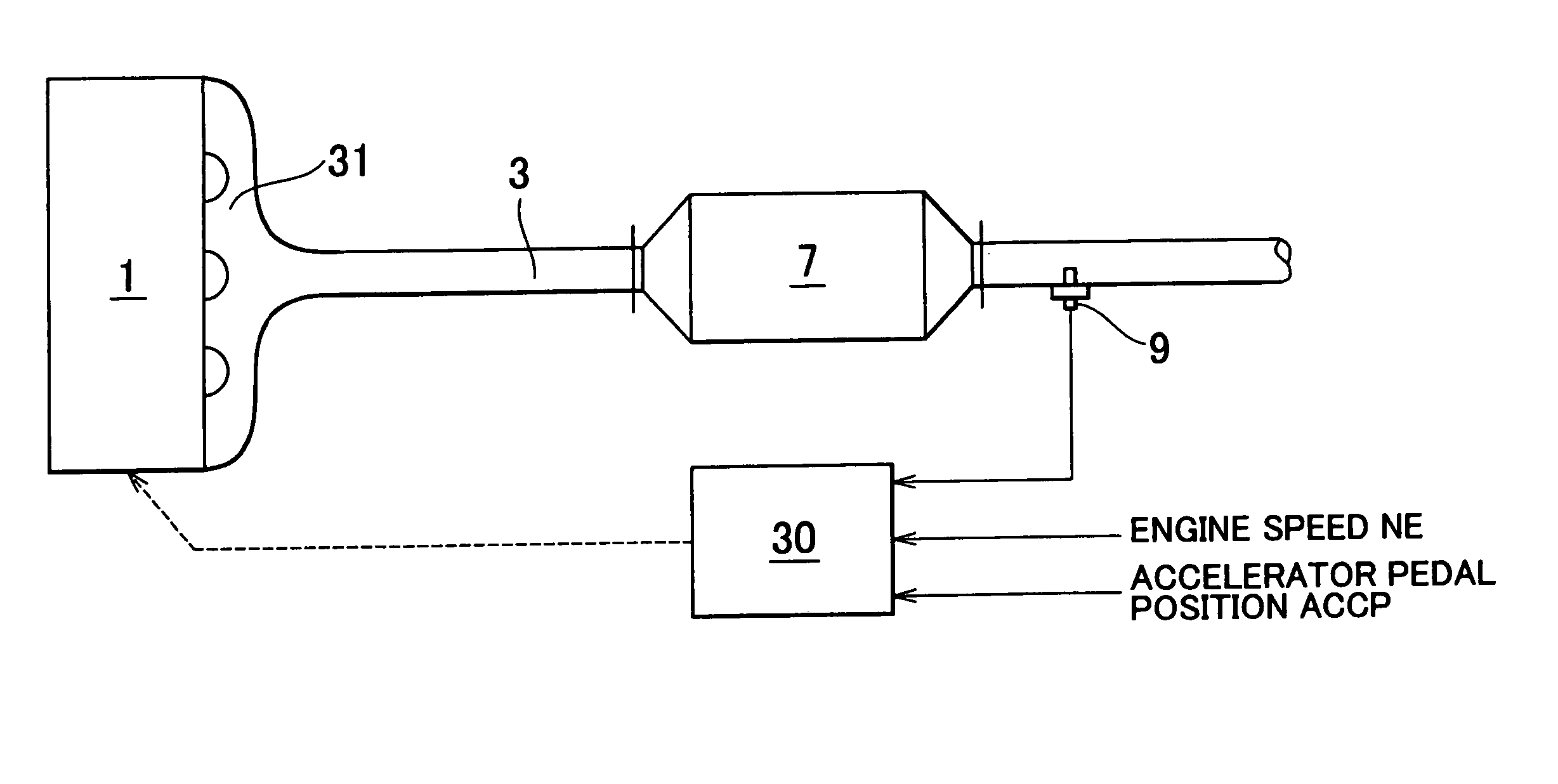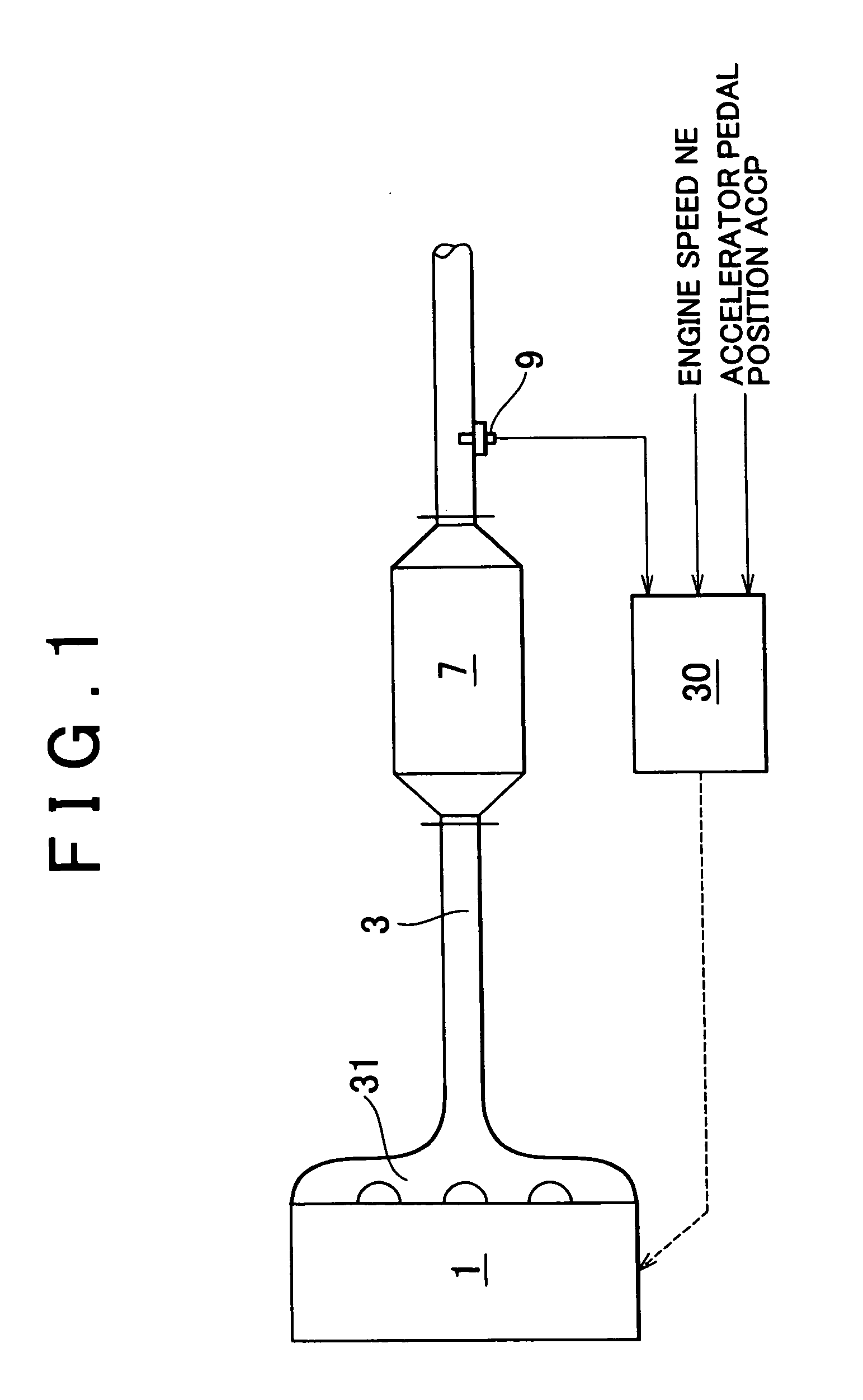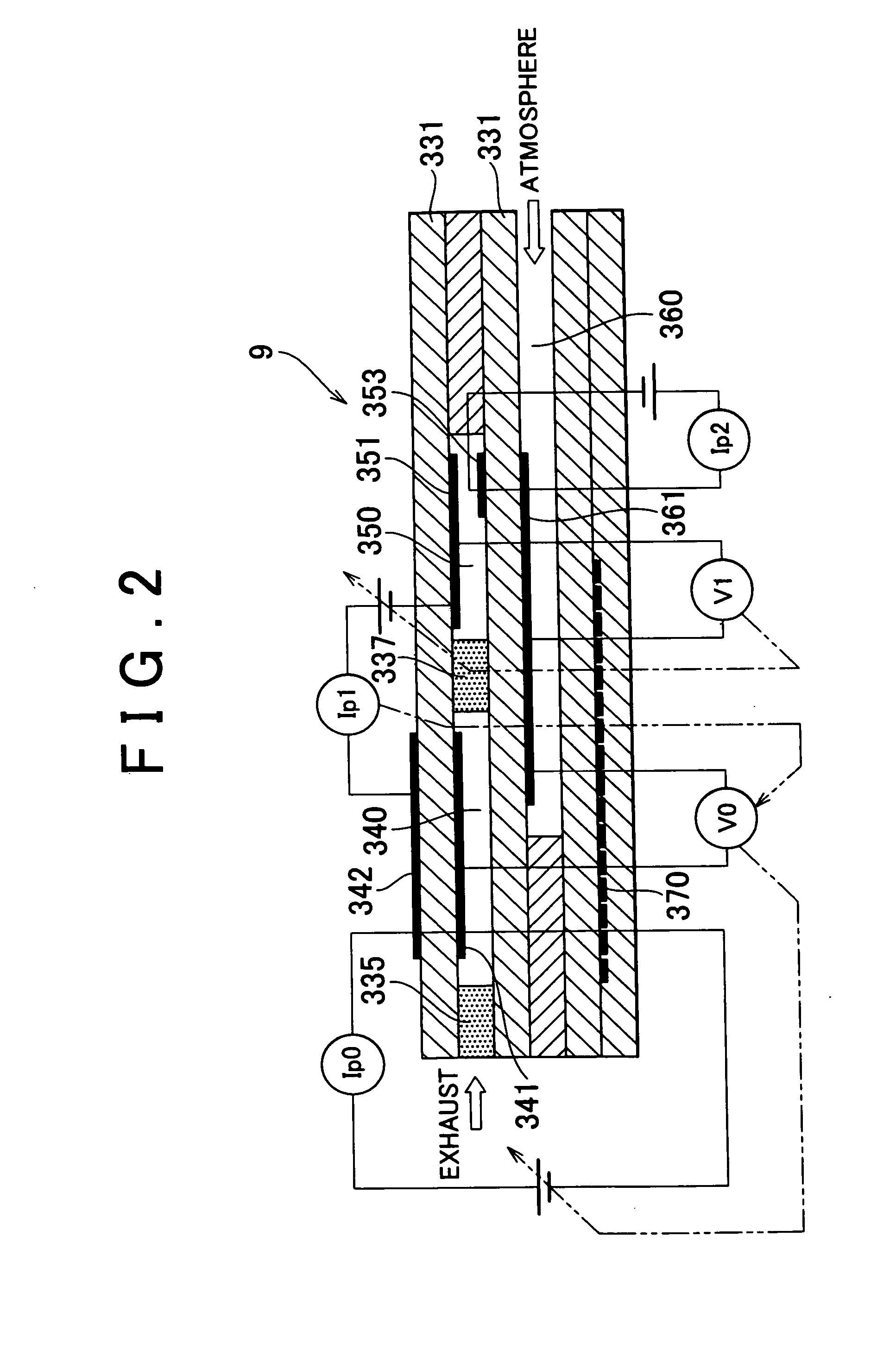Exhaust emission control system and method
a technology of exhaust gas emission control system and internal combustion engine, which is applied in the direction of electric control, machines/engines, mechanical equipment, etc., can solve the problems of nox storage/reduction catalyst degradation or deterioration, nox storage/reduction catalyst gradual reduction, and the ability to remove nox from exhaust gas. , to achieve the effect of reducing the nox removal capability of the nox storage/reduction catalyst, the effect of reducing the nox removal capacity
- Summary
- Abstract
- Description
- Claims
- Application Information
AI Technical Summary
Benefits of technology
Problems solved by technology
Method used
Image
Examples
Embodiment Construction
[0050] An exemplary embodiment of the invention will be described with reference to the accompanying drawings.
[0051] FIG. 1 schematically shows the construction of an exhaust emission control system as one exemplary embodiment of the invention when applied to an internal combustion engine of a vehicle, such as an automobile.
[0052] The system shown in FIG. 1 includes a main body of the internal combustion engine 1, an exhaust pipe 3 through which exhaust gas emitted by the engine 1 flows, and an exhaust manifold 31 that connects the exhaust pipe 3 to exhaust ports of respective cylinders of the engine 1.
[0053] In the present embodiment, a NOx storage / reduction catalyst 7 is disposed in the exhaust passage 3. The NOx storage / reduction catalyst 7 selectively traps and stores NOx contained in exhaust gas flowing into the catalyst, through adsorption or absorption or both processes, when the air / fuel ratio of the incoming exhaust gas is lean, and reduces and removes the stored NOx by usi...
PUM
 Login to View More
Login to View More Abstract
Description
Claims
Application Information
 Login to View More
Login to View More - R&D
- Intellectual Property
- Life Sciences
- Materials
- Tech Scout
- Unparalleled Data Quality
- Higher Quality Content
- 60% Fewer Hallucinations
Browse by: Latest US Patents, China's latest patents, Technical Efficacy Thesaurus, Application Domain, Technology Topic, Popular Technical Reports.
© 2025 PatSnap. All rights reserved.Legal|Privacy policy|Modern Slavery Act Transparency Statement|Sitemap|About US| Contact US: help@patsnap.com



